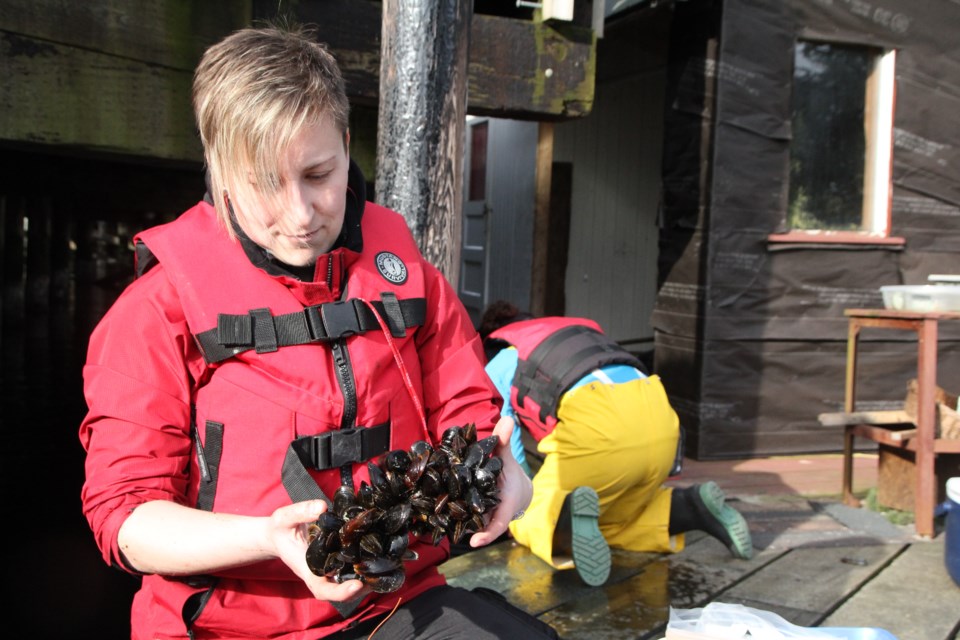Scientists from the Vancouver Aquarium Marine Science Centre recently extracted 60 day-old mussels grown off of Norma’s dock in Snug Cove as part of a wider program, named PollutionTracker, to measure pollutants in British Columbia’s coastal waters.
“Mussels are great integrators of water quality, taking out particles and water bound contaminants, giving a snapshot of what’s going on,” says Dr. Peter Ross, director of the Aquarium’s Ocean Pollution Research Program. “Sediments are the ultimate sink for ocean pollutants, so taking a sediment sample and looking at a range of different contaminants is pretty informative in terms of looking at the general state of contamination in a coastal region. So by doing both we are looking at different but complimtary signals in terms of what’s in the water and what sinks to the bottom.”
Analysis of wild mussels and sediment are the basis of the Pollution Tracker study, but the analysis of genetically controlled “caged mussel,” such as those pulled out of Snug Cove, are an addition to it.
Ross adds that while similar studies have been ongoing in the US for more than three decades, this is the first study of its kind in Canada. What makes Pollution Tracker stand out on an international level is the range of contaminants that will be tested for, as well as the level of detection.
“In setting up these 50 Pollution Tracker sites up and down the coast we’re hoping, for the first time, to compare like with like up and down the coast and look for a very wide range of contaminants, and that would include PCBs, PBDEs, Dioxins, Furans, metals, hydrocarbons, micro-plastics, flame-retardants, pharmaceuticals and personal care products,” says Ross. “And we’re also asking that a high resolution analysis be done. So that’s using the most expensive instrumentation and protocols in the lab, which allows you to reduce the detection limit and give us more compounds to look at.”
Ross adds that there are no results back from any of the detection sites, but when the research is complete, his team will write up their results for scientific literature, to report to funders and to inform the public.



